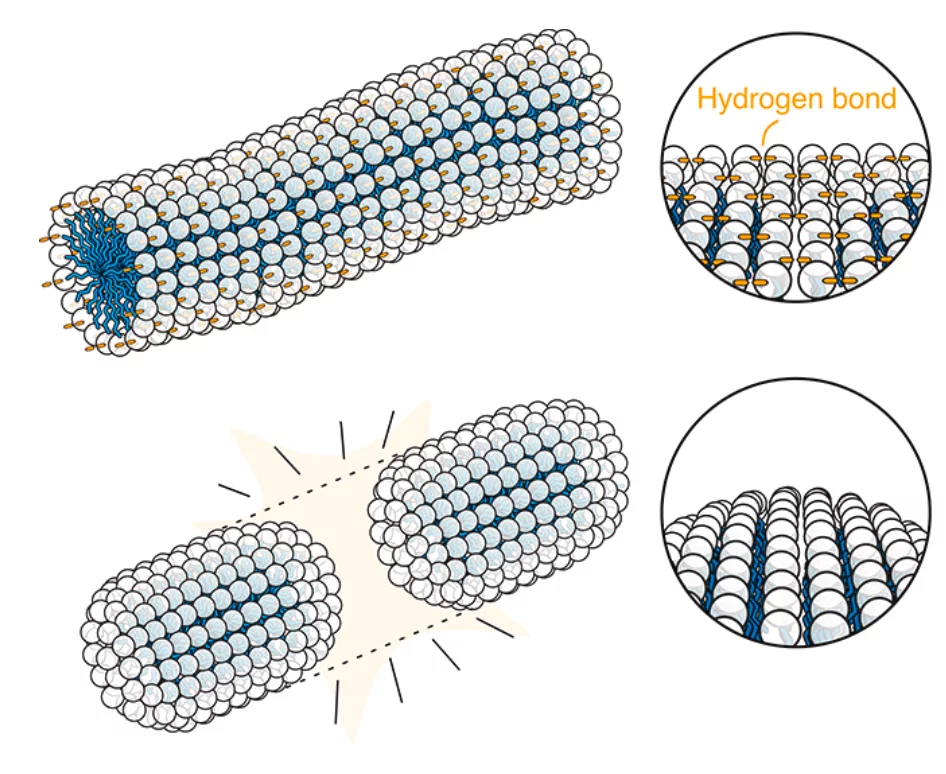Many day-to-day materials rely on formulations of surfactants to control flow, texture and application. Inspired by the pairing of bases between DNA strands, we demonstrate enhanced control over the elongation of micelles solely through the inclusion of hydrogen bonding interactions between amino acid- and betaine surfactants, increasing scission energy.
The formation of wormlike micelles of sodium N-lauroyl l-serinate (NaLSer) and laurylamidopropyl betaine (LAPB) are quantified by the characteristic scattering of elongated objects in small angle neutron scattering, and by the distinct shear-thinning and viscoelasticity measured through rheometry.
In stark contrast, the absence of hydrogen bonding groups inhibits elongation, only able to form inviscid, spheroidal micelles for mixtures of sodium N-lauroyl l-alaninate (NaLAla) and lauryl betaine (LB). It is evident that hydrogen bonding stimulates uni-axial growth of micelles, enhancing viscosity and control over flow properties for applications in personal care, active delivery and rheological modification.
Facility: SINQ
Reference: V. Lutz-Bueno, A.P. Williams, Journal of Colloid And Interface Science 704, 139382 (2026)
Read full article: here



